Prior to working with InnovationCast, Vrije Universiteit Amsterdam (VU), a renowned public research university in Amsterdam, had never had structured innovation processes where students, lecturers, and staff members could share innovative ideas.
This left tremendous creative thinking and problem-solving untapped and locked away in individual minds, not leveraging one of VU’s greatest assets: the collective brainpower of some of the most educated, creative, and forward-thinking people in the Netherlands.
Due to this, countless ideas that could have improved education or addressed complex problems such as food insecurity, pollution, disease, and others never got to be shared, tested, or scaled.
In fact, many students approached lecturers and faculty members asking for a place to share ideas that they thought would have a significant positive impact on society, but there was none.
Amanda Porter, associate professor at VU, said:
“There really was nowhere that anybody could come up with an idea... unless there's a terrible problem, we didn't innovate.”
So, when everyone shifted to remote learning shortly after the onset of COVID-19, Amanda Porter, Damla Diriker and a team of innovation researchers at VU decided to implement a collaborative crowdsourcing platform called Impact Lab, powered by InnovationCast.
Below, we share how VU used InnovationCast, our innovation management software, to create Impact Lab and tap into the perspectives, competencies, and ideas of key stakeholders and launch solutions that address complex societal problems.
VU Used Innovation Challenges to Source High-Quality Ideas Addressing Complex Problems
Problem: VU was underutilizing the brainpower of students, lecturers, and faculty.
Solution: VU used Innovation Challenges strategically to focus stakeholders on specific and urgent problems that required innovative ideas.
Results: An engaged community of students, lecturers, and staff, submitting hundreds of high-quality ideas in weeks.
The innovation research team at VU knew that digital idea boxes like a Google Form or email address typically lead to generic, half-baked ideas because they provide little context on the priority. Thus, stakeholders struggle to get a deep understanding of a particular issue before sharing an idea.
Crowds also tend not to engage when the idea box remains open indefinitely, as the lack of a deadline creates no sense of urgency.
To engage students, lecturers, and staff, VU used Innovation Challenges. Innovation Challenges is a feature within InnovationCast that enables VU to create postings outlining the priorities they want to address and invites the three stakeholders to submit ideas.
Participants could study the information inside the challenge (videos, documents, FAQs, evaluation criteria, etc.), gain a deep understanding of its intricacies and nuances, know what kinds of ideas VU was looking for, submit relevant ideas, and develop them collectively.
Each challenge had a deadline, which helped spark engagement among stakeholders.
InnovationCast’s guidelines helped the Impact Lab team write these challenges in a way that engages stakeholders — by including elements like rewards, evaluation criteria, and context, among others.
Furthermore, there’s a fine line between providing enough detail and overwhelming stakeholders with too much information, so InnovationCast also guided VU in striking the right balance.
For example, we can see here that Impact Lab launched five challenges, each around different complex problems.
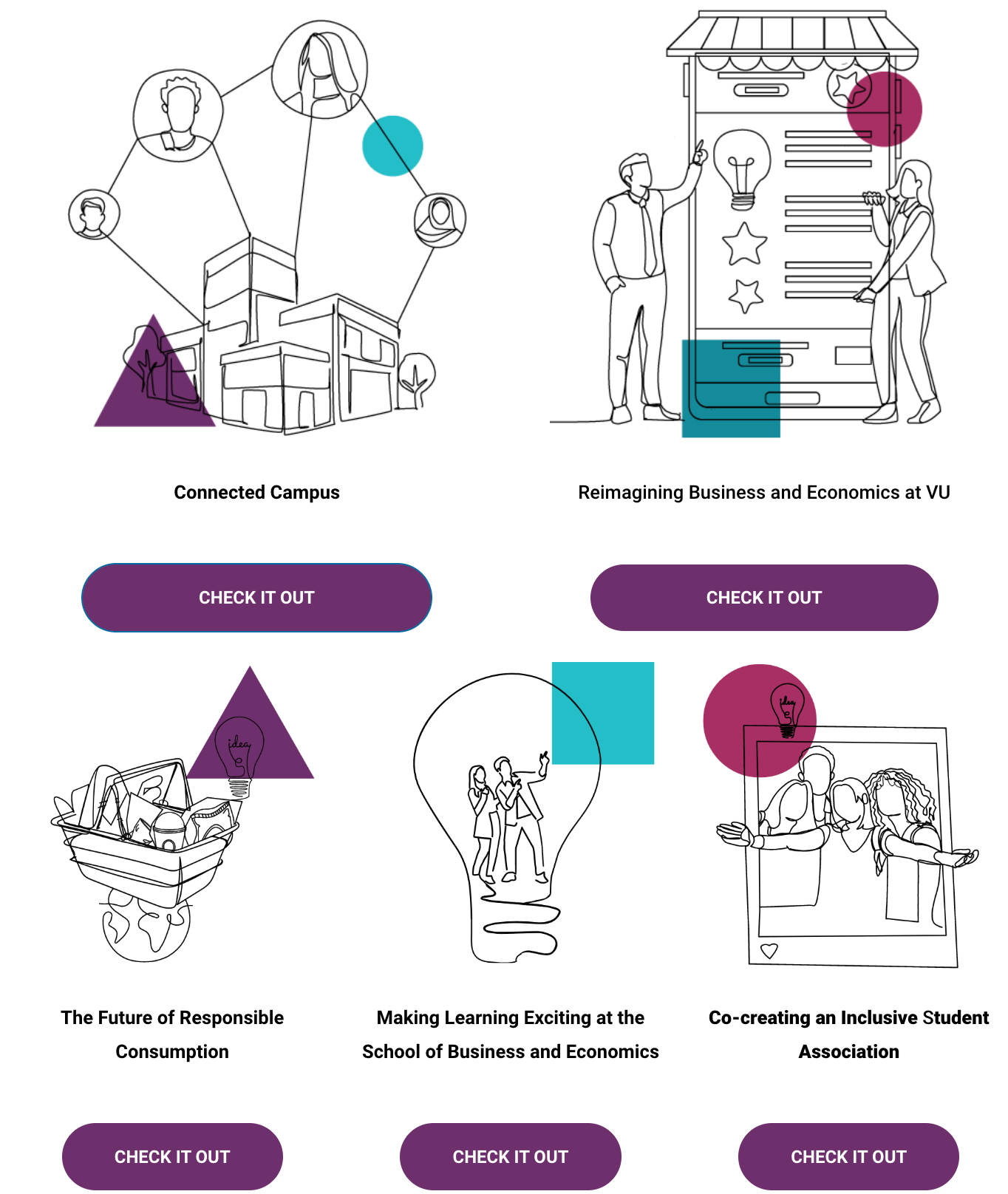
To keep students, lecturers, and staff engaged during and in between challenges, VU utilized InnovationCast’s newsletter templates to send email reminders highlighting the importance of their ideas. They’d even highlight the best ideas mid-challenge to inspire others and encourage them to get involved.
As a result, VU saw high engagement rates immediately after launching Impact Lab. For instance, this challenge for creating a more connected campus received 54 high-quality ideas in just 10 weeks.
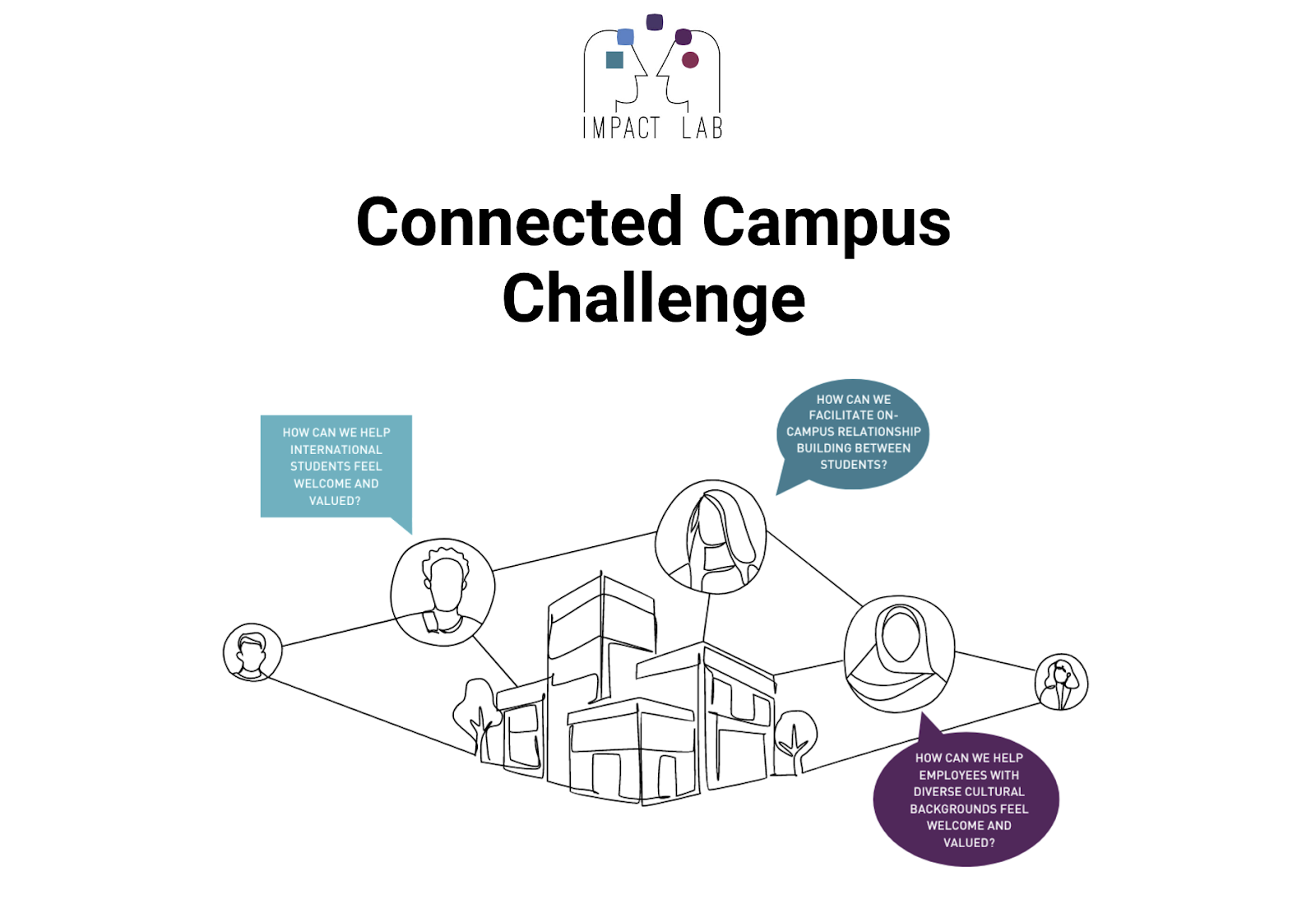
Through Impact Lab, VU unlocked a new culture of proactive innovation. Suddenly, anyone — from a first-year student to a senior faculty member or a lecturer — had a platform to voice their ideas.
As Damla put it:
"Opening the platform surfaced blind spots. For example, a student with a hearing disability identified accessibility gaps we hadn’t considered—and we acted on it."
Read more: How to Implement an Effective Idea Generation Process in Your Organization
VU Encouraged Students, Lecturers, and Staff to Co-create and Improve Ideas
Problem: VU aimed to address grand and complex societal issues, which necessitated co-creation among stakeholders following the submission of ideas. Traditional idea boxes don’t facilitate this level of collaboration.
Solution: VU used InnovationCast to display all ideas on an activity feed for stakeholders to view and encouraged them to provide feedback to idea authors on how to improve their ideas.
Results: Revolutionary apps like Consciously and Transit and Go, which help consumers make more environmentally-friendly buying decisions and reduce carbon emissions.
Through their decades of innovation research, the Impact Lab team recognized that collaboration and co-creation among multidisciplinary stakeholders were necessary for developing solutions to complex problems.
This is because complex problems are multifaceted in nature, and no single person can fully comprehend their nuances or how they affect different groups. Consequently, it’s unrealistic to assume that one person can deliver a fully formed solution without collaboration and iteration.
For example, students may have a good idea about improving how lessons are run, but can't understand what it would require from lecturers and staff members. Therefore, getting the three stakeholders to think through and build upon one another’s ideas was integral for developing more complete and higher-quality ideas.
With a digital suggestion box, there’s no opportunity for co-creation and idea refinement. All contributions stop after a stakeholder has submitted an idea.
Damla said:
“For complex problems, you don’t need an idea box—you need collaboration. People must co-create, share insights, and improve ideas together.”
To encourage co-creation, VU wanted ideas to be accessible to all three stakeholders. This way, lecturers, staff, and students enrolling in a range of academic programs could build on the author’s insights, combine partial solutions, bring attention to overlooked considerations, and challenge assumptions to refine the idea.
VU found that InnovationCast’s focus on collaboration and transparency could help facilitate co-creation among diverse perspectives.
Whenever a new idea was submitted, students, lecturers, and staff members could view it on their InnovationCast activity feed.
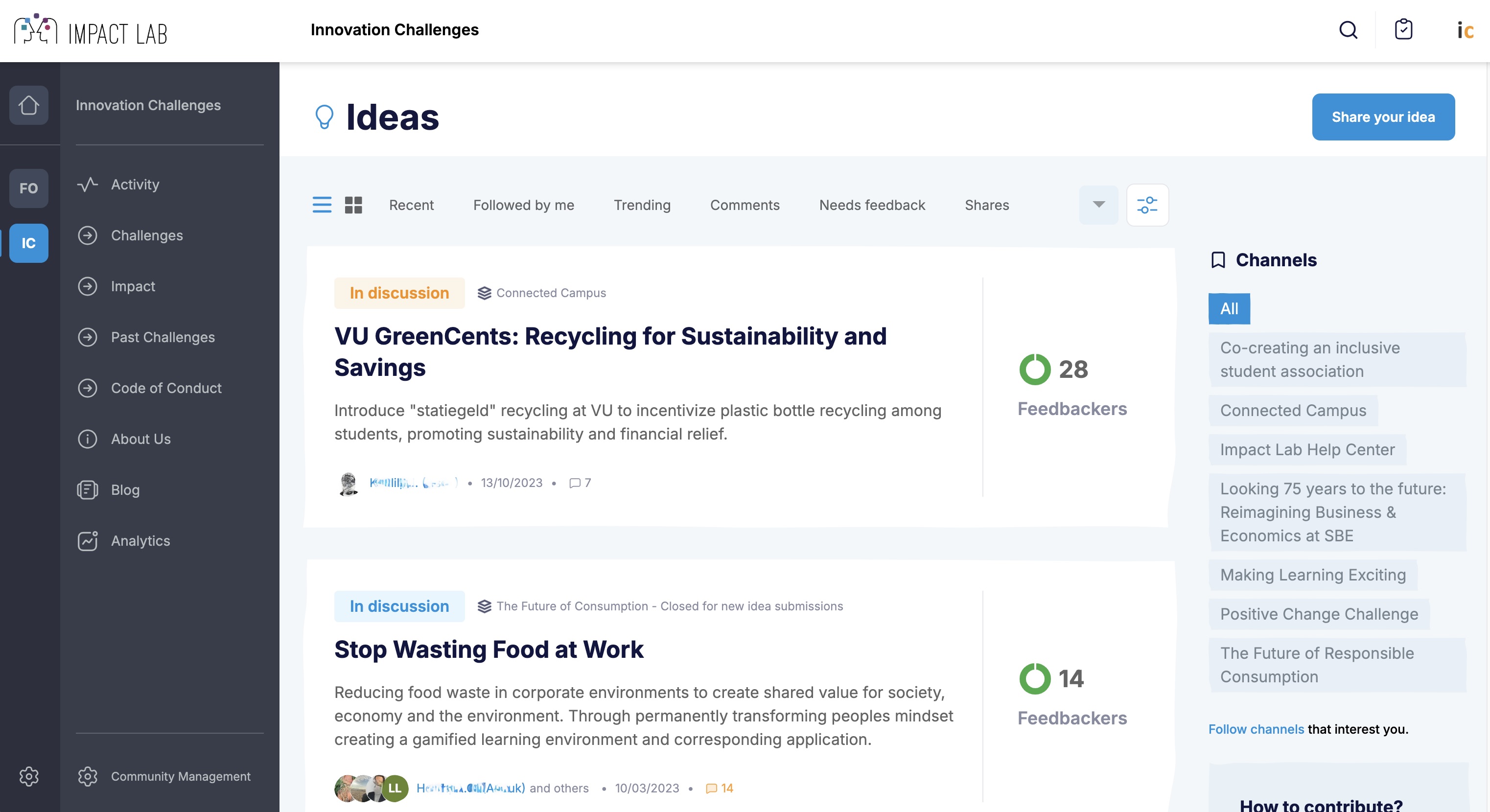
Stakeholders could review the details of each idea, vote by saying whether it looks good or needs work, and give productive feedback.
Authors could also ask for feedback on specific parts of their ideas: Would you use this? Are there any limitations? What would you do differently?
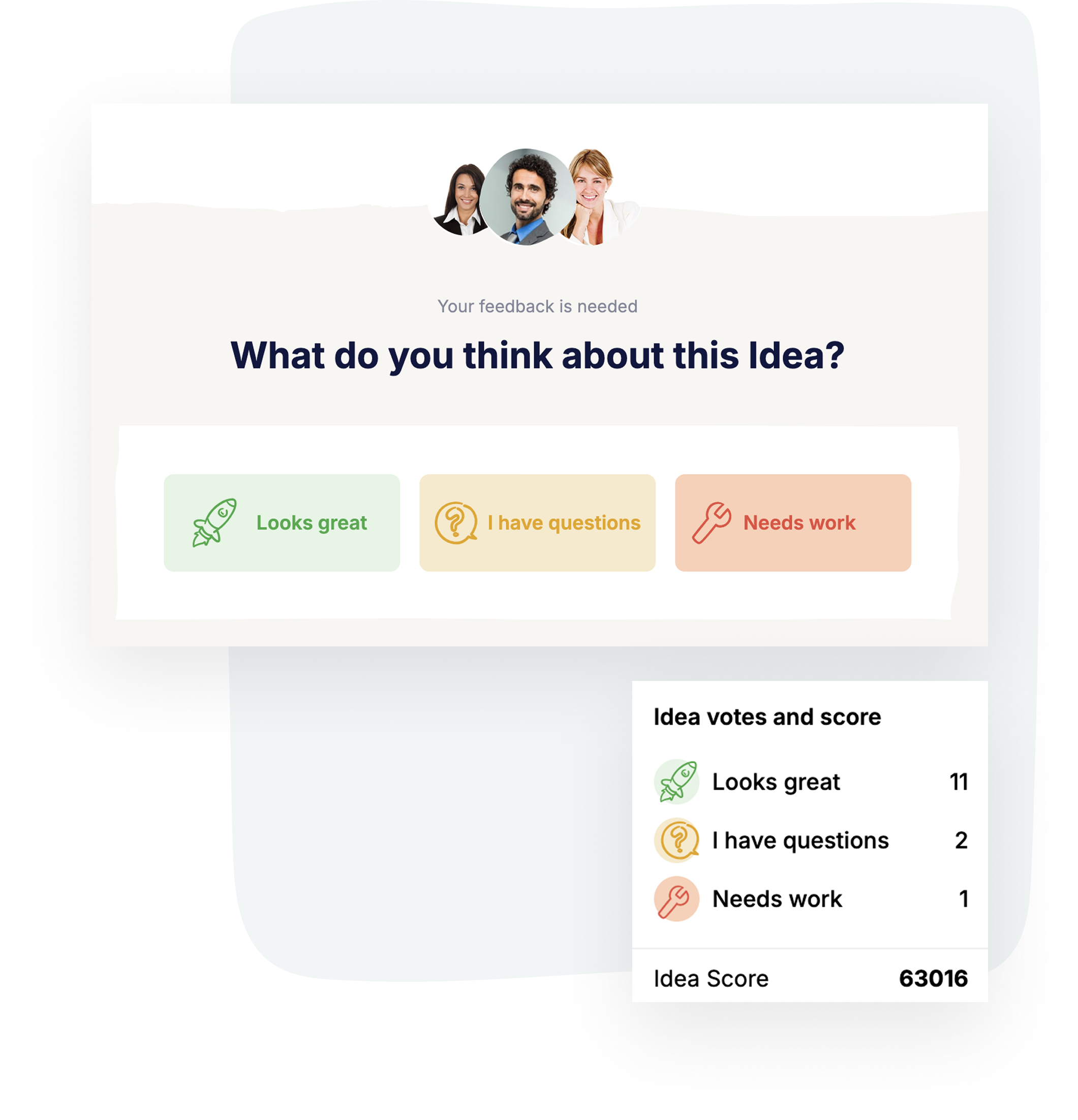
Idea authors and co-creators could communicate within the platform, and all media and communication are saved for easy reference. This bridges the gap between lecturers, staff, and students, as previously, there was no way for them to collaborate.
As everyone is co-creating and editing ideas, the Impact Lab platform automatically saves previous iterations for stakeholders and evaluators to look back and see how the idea was shaped. In fact, one of the key factors evaluators observe when assessing ideas is that stronger ideas are usually the ones that were refined and iterated upon.
For example, when Accenture sponsored the challenge on responsible consumption, VU coincidentally had a business course running on sustainable marketing. So, they invited those students to use what they learned in the course to enrich ideas, which was one of the key drivers behind the challenge’s success.
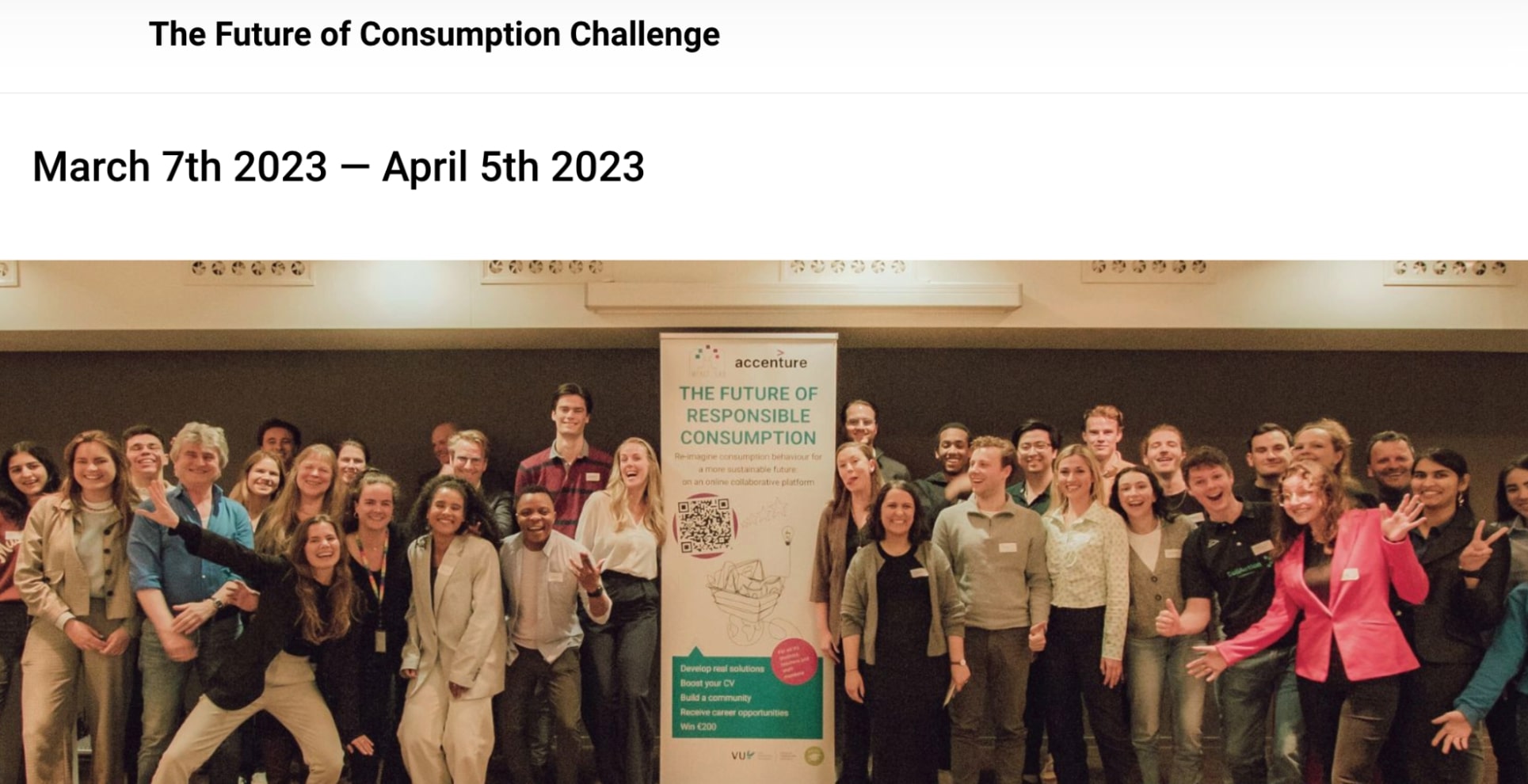
Idea authors could also acknowledge particularly valuable feedback by tagging comments as a “Significant Contribution.”
These tagged comments were then highlighted, which showed the community that feedback is valued within idea threads, creating a more engaged crowd. It also made it easier for others — especially busy students — to quickly spot the most helpful input without having to read every single comment.
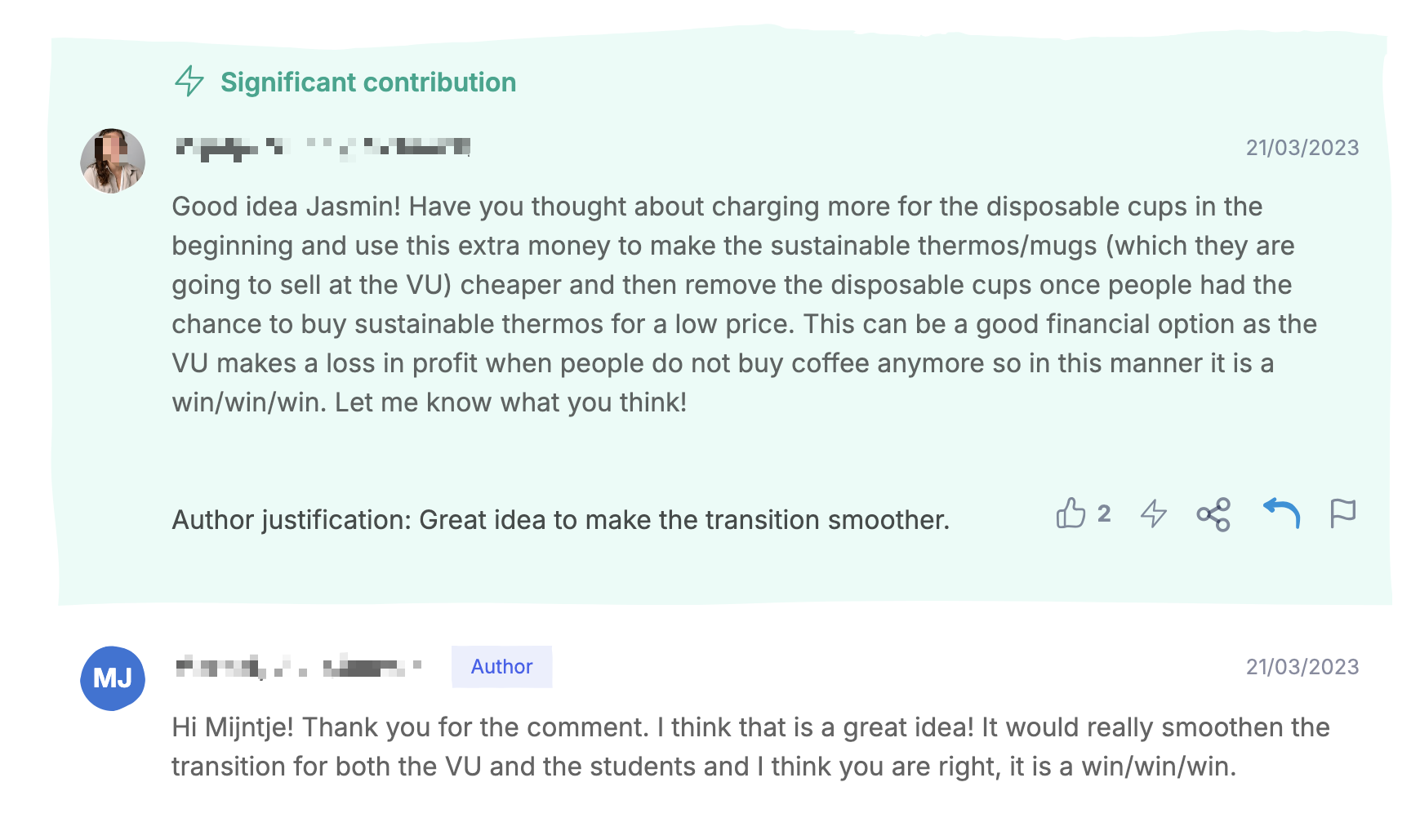
When asked about alternative innovation and co-creation solutions to InnovationCast, Damla said:
“I don’t see how we could have co-created and refined ideas without InnovationCast. Seeing ideas evolve in public—continuous edits, comments, and merged threads—nudges everyone to participate more thoughtfully.”
VU Kept Co-creation and Refinement Going throughout Validation and Implementation
Once ideas were evaluated and the winners were chosen, VU would ask the idea author to prove that their concept is practical in the real world.
VU would establish a team responsible for validating an idea, usually containing a student, lecturer, and staff member. Sometimes, validation teams would bring in external stakeholders such as the science faculty or the sanitation department. This mix of perspectives keeps co-creation and idea refinement intact throughout the validation process.
For example, one of the challenges VU launched was to reduce the usage of paper cups on campus. A student proposed a concept for a machine that would dispense a real coffee cup, which could be returned to the machine after use to be washed and cleaned.
They collaborated with engineering students from the science faculty, who assisted in developing the technological aspects of the concept. Through ongoing feedback, the team refined their ideas and ultimately produced a detailed prototype illustration outlining how it would function.
They then co-created with waste facilities and the sanitation department to assess whether the concept aligned with health and safety regulations.
Ultimately, when working with campus sanitation, the validation team encountered roadblocks related to health and safety regulations and decided to discontinue the idea.
Even though they were unable to implement this idea, other idea authors were able to build off these learnings when refining and validating their ideas.
All this validation was done within the InnovationCast platform. Teams could create workflows that ideas must pass through, assign each task in the workflow to a specific team member, and InnovationCast notifies the team member when they need to step in.
All communication and resources — such as chats, prototype drawings, meeting notes, and progress updates — are stored within InnovationCast, where all relevant users can access them. This prevents innovation work from being scattered across different tools and makes it easier for departments to collaborate.
Results That VU Was Able to Achieve by Launching Impact Lab
Impact Lab started as a temporary initiative, but VU got so many high-impact ideas that they are in the process of turning it into a permanent initiative.
"We didn’t want a platform that just collects ideas—we wanted follow-through. Implementation mattered."
– Damla Diriker
“I think ideation and open innovation should be a service to the university in the same way that the library is a service.”
– Amanda Porter
Here are some examples of results VU generated.
The Future of Responsible Consumption Challenge
Collected 100 valid ideas over 8 weeks.
Some of the winning ideas included applications like “Consciously,” “Transit and Go,” and “Stop Wasting Food at Work.”
One of the most successful challenges that VU launched was on the future of responsible consumption. It was sponsored by Accenture and is based on the idea that consumer behavior is one of the leading causes of environmental degradation; therefore, VU needed solutions to make the future of consumption more sustainable.
During the eight weeks, VU collected 100 ideas and hosted them on the Impact Lab platform, where everyone, including Accenture employees and stakeholders, could view the ideas, provide feedback, and co-create.
Here are some of the winning ideas:
The “Consciously” mobile app: Irene Ferrara proposed launching an application that shows consumers which products have the biggest negative impact on the environment, thus allowing them to make more conscious buying decisions.
The “Transit and Go” app: Shuminnar Singh, Gergő Mezei, Yaman Namli, and Janick Scheenhart proposed an app that enables individuals to take on small delivery tasks, such as transporting letters or packages, while going about their daily errands or traveling for leisure. By leveraging existing travel routes, Transit and Go aims to reduce carbon emissions associated with traditional delivery services.
The “Stop Wasting Food at Work” idea: Anouk Holch, Stan Meekel, Lisette Lokers, and Douwe Borren submitted an idea for a gamified learning environment designed to help companies address food waste in the workplace. By combining interactive challenges with behavioral nudges, their solution encourages employees to become more aware of their consumption habits and take concrete steps toward reducing waste — turning sustainability into a game.
Connected Campus Challenge
Collected 54 ideas over 10 weeks.
Some of the winning ideas included a VU Business Market, a Culture/Country Fairs, and an art competition.
Another complex problem that VU wanted to address was helping everyone reconnect after the pandemic-induced lockdown. They launched the Connected Campus challenge, looking for creative ideas on how students, lecturers, and staff can meaningfully reconnect with one another.
During the 10-week challenge, VU collected 54 ideas, and here are some of the winners:
VU Business Market: Özlem Bayazit submitted an idea for creating a campus-based marketplace where students can present their entrepreneurial ventures or unique skills. The goal is to cultivate a culture of collaboration, transparency, and mutual support among students. Beyond promoting student-led initiatives, the VU Business Market is also a space for networking and social reconnection.
Culture/Country Fairs: Laura Ivaci and Bertram Ponoicny’s proposal centers on organizing an annual event where students can experience and celebrate cultural diversity on campus. Through food tastings, traditional attire, and customs, the fair offers an immersive way for students to broaden their understanding of global cultures.
The VU Stairwell Art Competition: Tjeerd Thunissen proposed using art as a means to support mental well-being and reduce stress. His concept involves hosting a university-wide art competition, with the winning pieces displayed in the main building's stairwell. The initiative offers students a platform for creative expression and stress relief.
Implement a Collaborative Crowdsourcing Program Within Your Organization Using InnovationCast
Schedule a 25-minute demo to see how InnovationCast can help you utilize the collective intelligence of the crowd to solve complex problems.

